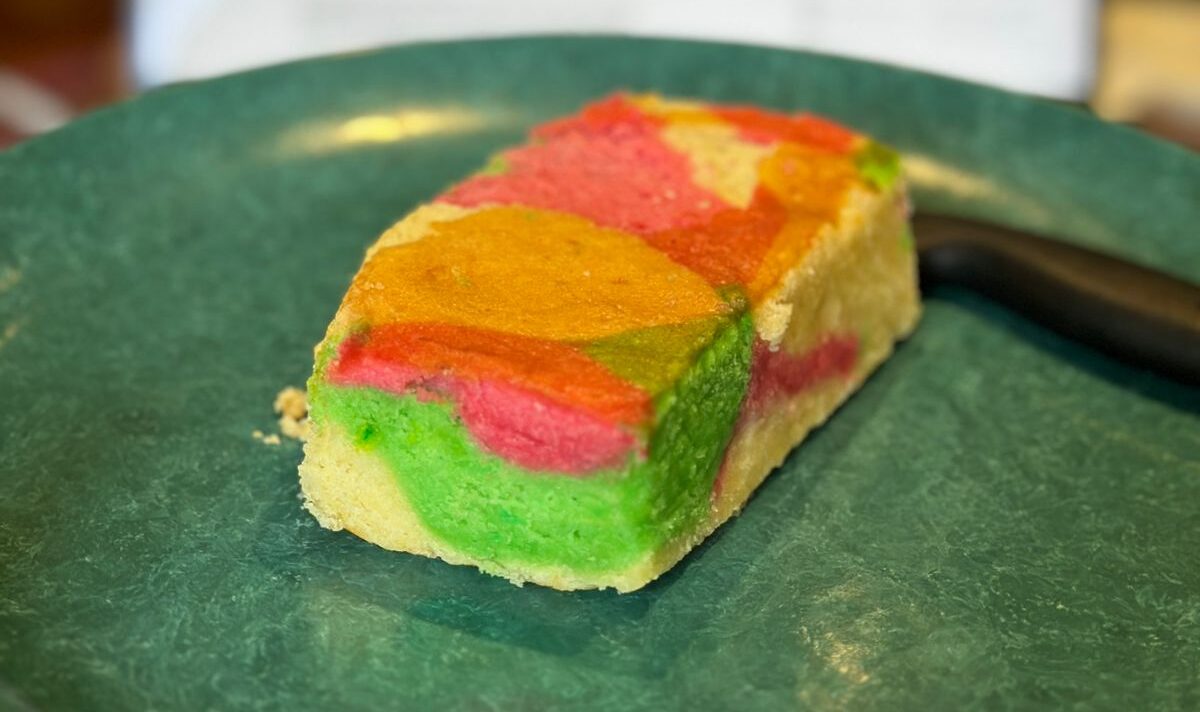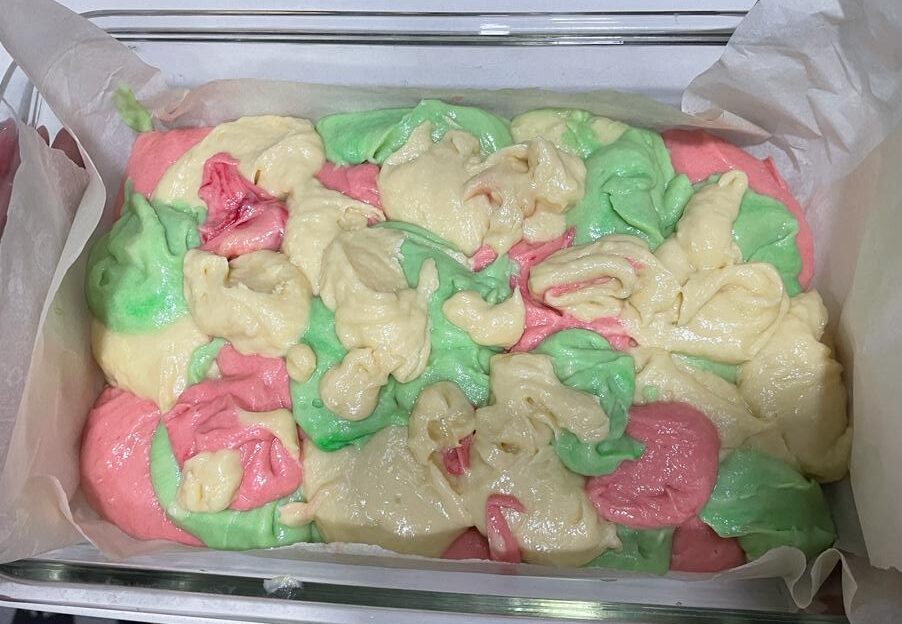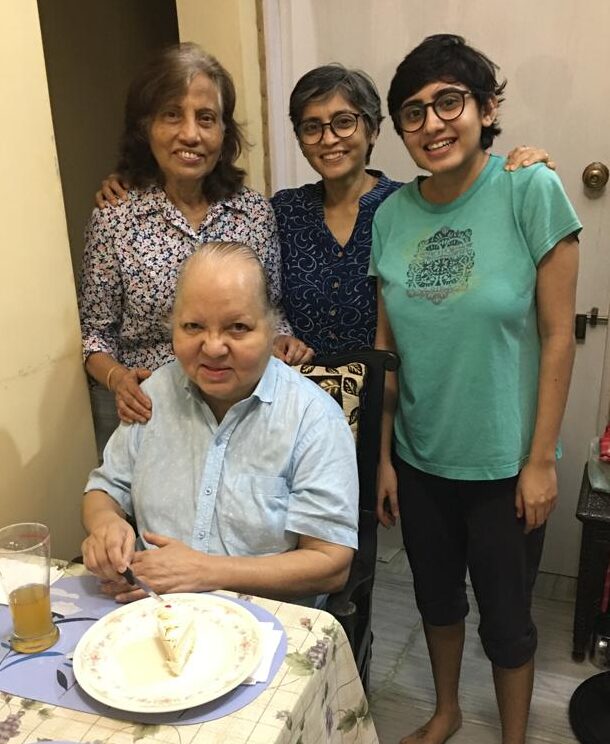
For Riya and her sister Nikita, their love for food was instilled in them by their grandmother, Marie Rosario, and their mother, Charmaine. The dish the siblings fondly associate with this love is their grandmother’s coloured cake. “Only nani knew the entire recipe,” the sisters reminisce, but the recipe was actually handed down to Marie Rosario by her mother. When Marie Rosario was young, making the coloured cake was a labour-, time-, and resource-intensive process, as there was little-to-no refrigeration to store the cake batter. The batter had to be made fresh, poured into cake tins, and then taken to a nearby bakery to cook since most homes did not have ovens.
Modern conveniences may simplify this recipe, but in their household, the cake is still reserved for special occasions. Marie Rosario ensures that every member of the family is designated a role in creating the cake’s elements. Marie Rosario and her recipe created a tradition that the entire family continues to enjoy for a long time to come.
| Refined flour (maida) | 250 grams |
|---|---|
| Baking powder | 1 teaspoon |
| Eggs | 5 |
| Butter (at room temperature) | 250 grams |
| Powdered sugar | 250 grams |
| Vanilla essence | 2 teaspoons |
| Red food colouring | 1-2 drops |
| Green food colouring | 1-2 drops |
What You Will Need
Mixing bowls, sieve, spatula, whisk, 6-inch loaf tin, butter paper
Instructions
Sieve the refined flour and baking powder together, making sure the clumps are broken up.
Separate the egg whites from the egg yolks and keep them aside.
In a clean mixing bowl, add the softened butter and powdered sugar. Whisk well until the mixture becomes lighter in colour and fluffier in texture. This will happen only once all the sugar melts into the butter while there is a continuous whisking motion.
Once the desired texture is achieved, whisk in the egg yolks in parts. Alternate each addition of egg yolk with a spoonful of refined flour to ensure that the yolks do not curdle the butter.
Add in any remaining flour and vanilla essence. Ensure that all of the flour is hydrated and forms a smooth batter.
After the flour is incorporated, whisk the egg whites till they form soft white peaks. Add the whisked egg whites into the batter.
Now remove the whisk and use a spatula to gently fold in the egg whites to homogenise the batter.
Divide the batter into three equal portions in separate bowls for the addition of colour: a red batter, a green batter, and a regular or off-white batter. The last batter has no food colouring.
Add in one or two drops of the red and green colours into the first two bowls respectively, gently folding until a uniform colour is achieved.
Line two rectangular 6-inch loaf tins with butter paper and add the three batters into the tin. Carefully add in spoonfuls of the different coloured batters, ensuring they remain distinct. Cycle between the colours to achieve a mosaic-like effect.

Preheat the oven for 10 minutes at 160 degrees Celsius before placing the cake tins.
Bake the cakes for about 40 minutes at 160 degrees Celsius. Once baked, remove the cake from the tin, and let it naturally cool down to room temperature before serving.

Tips
Marie Rosario suggests that a cup of fresh malai (cream) collected from milk can be used as a substitute for butter.
Riya Behl (@riyalising) is an artist, photo-journalist, and co-founder of Zinedabaad Collective. She was a former editor at People’s Archive of Rural India (PARI) and is currently reading for an MA in Participatory Research at the Institute of Development Studies in the United Kingdom.
This recipe is a part of ‘A Longing for Home Food Booth’, an oral food memories project from The Locavore’s immersive installation at the Serendipity Arts Festival, 2023.
Listen to the complete memory of the recipe by visiting this link: Coloured Cake
You must be logged in to rate this recipe.

Sign in with email

